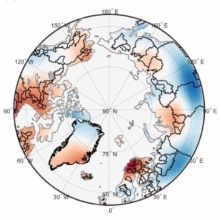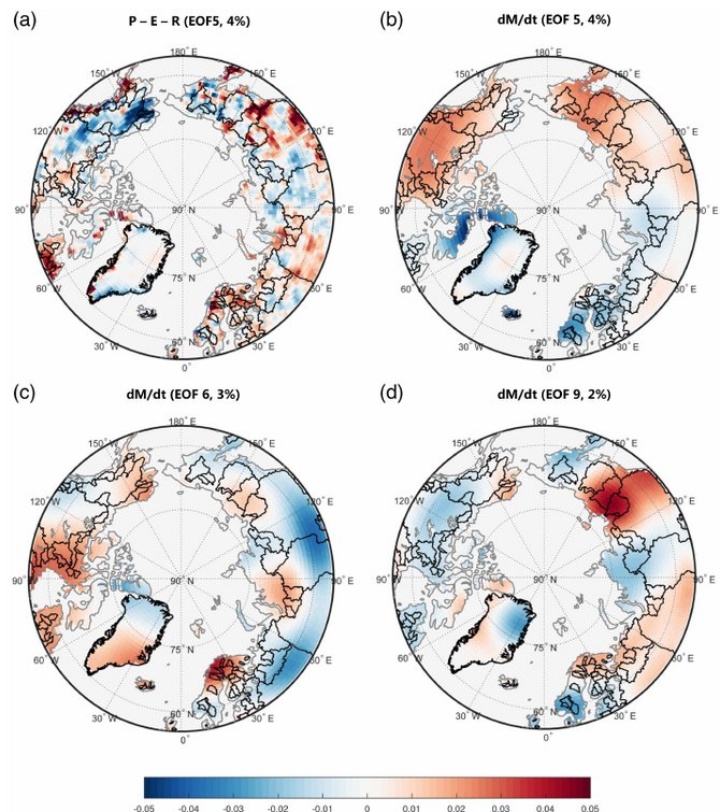Abstract
An increasing number of studies suggest that climate change causes variation in the terrestrial water cycle. It is known that the precipitation as the source of water storage change on land and ocean is directly influenced by sea surface temperature (SST). At scales larger than, say, 350 km, such water storage variation can be monitored by the satellit e gravimetry mission, the Gravity Recovery and Climate Experiment (GRACE). How the water cycle changes inter-annually in the boreal region and how the hydrological variables such as precipitation, evaporation, run-off and terrestrial water storage relate to El Nino Southern Oscillation Index (ENSO) are still unanswered questions. We explore the teleconnection patterns of the boreal hydrological cycle and climate change indicated by ENSO over 2003–2014. We use monthly total water storage changes derived from GRACE, precipitation, run-off and evaporation on a 1° × 1° grid, land surface temperature anomalies on a 0.5° × 0.5 grid and global SST anomalies with 5° resolution. We apply canonical correlation analysis to link all the hydrological variables to ENSO through SST to identify the implicit relationship between the hydrological cycle on land and ENSO. We identify significant correlations larger than 0.6 between Nino 3.4 and
each hydrological variable via SST. The associated spatial patterns indicate a clear ENSO signature in boreal catchments, especially Ob and Yenisei. ENSO correlates to abnormal increase of temperature in Ob, Yenisei and Lena. A notable ENSO-
related increase of precipitation is found over Ob and a decrease over Lena and Yenisei. The negative water balance of Lena and Yenisei reveals a teleconnection between boreal water cycle and ENSO. In addition, the ENSO-associated modes
from terrestrial variables are investigated with aid of cross wavelet coherency. The phase shifts obtained by cross correlation analysis and wavelet coherency maps indicate the response of boreal hydrological cycle with a 1–2 month lag to ENSO.



